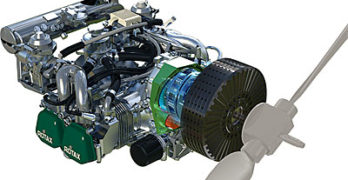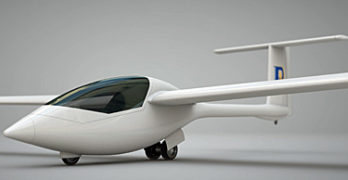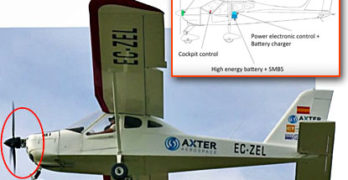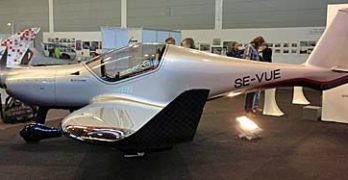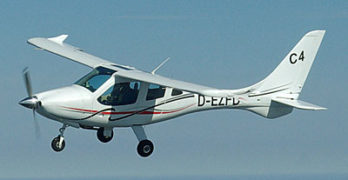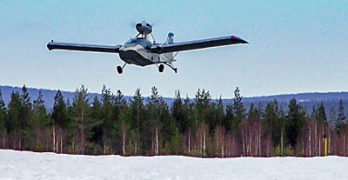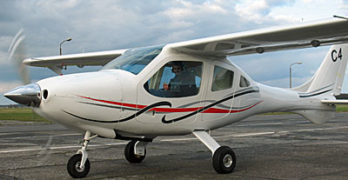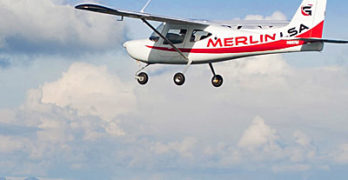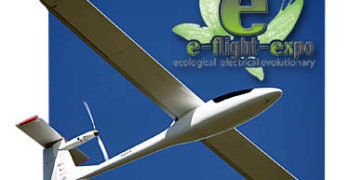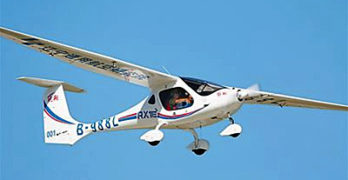With our friends at the prestigious Flying magazine putting Airbus’ E-Fan on their July 2015 cover, flanked by a major story inside, it seems everyone is following electric propulsion ever more closely. We’ve been doing it for a while as light aircraft are clearly the first place where electric power is best applied. Airbus may be planning an electric airliner but I don’t expect to see that anytime soon. Meanwhile the giant builder of airliners is indeed pushing forward with a two-and four-seat E-Fan.
However, I see another use of electric motors that strikes me as very compelling, and in the very near term. I wrote about a Spanish project earlier and here is another.
Many years ago when I was a young flight instructor, I dreamed up an idea called JERA, the Johnson Emergency Rocket Assist, born out of a small rocket engine that some gearheads were applying to go-carts on steriods.
Search Results for : flight design ct
Not finding exactly what you expected? Try our advanced search option.
Select a manufacturer to go straight to all our content about that manufacturer.
Select an aircraft model to go straight to all our content about that model.
Innovative Hybrid: Jet Power with Electric Motor
Some people, myself included, love soaring flight. As the following article from Dave Unwin explains, to use his words, “Soaring flight exercises a fascination that is both difficult to explain and hard to resist, sometimes called ‘three-dimensional sailing.’ Flying a heavier-than-air machine for several hours and hundreds of miles by using the atmosphere as the fuel possesses an undeniable attraction.” As he further explained in a longer article, the downside is getting airborne for soaring flight. Various alternatives have been explored. Some were reasonable; others were too marginal to be enjoyed. In the following piece Dave tells about a new aircraft that might solve this problem, one that can fit England’s innovative SSDR 300 (kilogram) category. —DJ
Article Updated 6/17/15 — ProAirsport announced, “We have now released a priority price of 39,950 British pounds (about $63,000). More details can be found on our website.” This is an excellent value for a motorglider.
Add-On Electric Motor Emergency & Boost Power
A few years back at Aero 2009, Flight Design and Rotax teamed up on a very interesting project. Based on the R-912 engine they added an optional electric motor that could provide additional torque (a characteristic electric motors have in abundance) for takeoff and climb or for emergency power in the event of a failure. The idea more than intrigued me and many others but it quietly disappeared.
Recently a Spanish university announced it had taken this concept to the next step. The team investigating this seemed focused on the emergency factor but opened the door to combined used of electric motor and gasoline engine. In case of a conventional engine failure, while very unlikely, an electric motor can, they said, deliver another 20 kilometers or 12.5 miles of range. That would be a literally saving grace to the pilot and occupants of a troubled aircraft.
Researchers at Universidad Carlos III de Madrid (UC3M) and the Axter Aerospace firm developed an electric propulsion system to install in light aircraft to deliver extra power and range in emergency situations.
Exciting Development Projects at Aero 2015
Aero is such an interesting event for many reasons. Among the most significant of these are the large number of aircraft introductions or the newest development projects one discovers in the vast gymnasium-sized halls … eleven of them in total. It can be hard to cover all the square meters, which although not as enormous as giant outdoor American shows, are nonetheless so packed with aircraft that one gets sensory overload before you’ve seen them all.
The world premiere of BlackWing was such a project. Here is the first light aircraft I’ve seen from Sweden; others may exist but I’m not aware of them. This sleek speedster uses the ubiquitous Rotax 912 to achieve what they state as stunning speeds up to 400 kilometers per hour (250 mph or 217 knots) and this from only 100 horsepower! Of course, this won’t work as a Light-Sport Aircraft but BlackWing is LSA in size and concept other than its blazing speed.
First Flight of Flight Design’s Four Seat C4
Aero 2015 is open! The halls are full of shiny airplanes displayed with the usual European sense of style and panache. Visitors are backed up at the entry gates awaiting the official opening time. (We sneaky media journalists are allowed in earlier to get photos and begin interviews with vendors.) It is a great event, for Europe and for aviation.
I already have some airplanes in mind for reporting, both brand-new designs and the sort you never see in the USA. I will aim to prepare coverage of some of them and report as soon as time permits. Yet first, I want to talk about a project that is equally exciting.
I refer to the Flight Design project aimed at the general aviation world, that is, of airplanes with more seats than allowed in the LSA space … in addition to more speed, more weight, and other capabilities.
Atol LSA Seaplane Makes Maiden Flight
“This was my best birthday present. All went well with no surprises,” reported an excited Anssi Rekual, sales manager and front man for the Finland-based builder of the LSA seaplane called Atol. An airline pilot today, Anssi added, “I have only one year to go with Finnair and then I can focus fully on Atol.”
The head of design and company CEO, Markku Koivurova flew for 26 minutes and reported that aircraft was easy and convenient to fly and everything worked normally. Approach to stall and slow flight characteristics were tested on Atol registered in Finland as OH-XNA followed by a perfect landing. Markku flew at Rovaniemi international airport (EFRO) at the Arctic Circle.
Speaking on behalf of the Atol team, Anssi was relating news that the reborn Atol took its maiden flight on Tuesday, April 9, 2015, just in time for the company to have significant bragging rights at the German Aero Friedrichshafen show set to open in two more days.
Spy Cam’ Catches Flight Design C4 in Taxi Test
We are heading into a weekend with a couple wonderful airshows immediately ahead. The dry spell since Sebring is over and Aero Friedrichshafen in Germany starts next week — preceded by meetings of the ASTM committee that writes the LSA standards. A couple days after Aero ends, Sun ‘n Fun starts. Whew! This is a tight schedule but what could be more enjoyable than going to airshows and finding lots of new airplanes about which to write and shoot new videos. I hope you’ll click back regularly to see the latest.
Meanwhile I have some fun bits of news to report here. Perhaps the best is that we obtained “spy photos” of Flight Design taxi testing their C4 in anticipating of their first flight (more below). Plus, Van’s Aircraft, the world’s largest producer of kit aircraft, set a new record. Let’s get started.
Flight Design has been at work on their four seater C4 for several years and it is finally nearing conclusion.
Glasair’s Merlin LSA Takes First Flight
What an amazing day! I heard of — count ’em — no less than three first flights. I don’t ever recall getting that kind of news in such a batch, but hooray! More airplanes to report on and more for customers to consider for their flying enjoyment. First up is the Glasair Merlin. I looked at the mockup of this new design at AirVenture 2014 (see video) and now she’s flying.
Glasair Aviation announced that their new Light-Sport Aircraft entry named Merlin “took its first flight through the skies above Arlington Municipal Airport Tuesday, April 7, 2015.” After many months of development work, the company put the new two seater through a regimen of preflight validation testing that included engine run-up, high-speed taxi, and ground roll lift off. Having completed this important set of tasks the team at Glasair watched as Merlin departed the surface with test pilot Grant Smith at the controls.
Electric Flight Events to Advance State-of-the-Art
A new season of airshows is about to erupt now that April has arrived. Among all the gasoline-powered aircraft that show visitors can see will be a growing collection of electric aircraft. As I often repeat, the pioneering development of electric propulsion will come first in light aircraft … at least until batteries go through a major breakthrough in energy density, as today’s best cells still weigh far too much for larger aircraft to use them effectively.
First up, in mere days, is the e-flight-expo, organized in cooperation with Flying Pages, the company operated by European publisher Willi Tacke who is well known for his Directory of Leisure Aviation.
Aero officials said “e-flight-expo will again be a major section at Aero Friedrichshafen 2015.” They note that as in other industries such as automobiles and drones, electric power continues to gain in importance in the man-carrying aviation sector.
Rui Xiang RX1E … Certified Electric Two-Seater
All over the world, electric airplanes are getting remarkable amounts of attention, deservedly so as an exciting development to match work in cars and other vehicles. These days, while drones (also called UAVs, UASs, or RPVs) are made in various countries, a lot of the development comes from China … so why be surprised to hear of a positive development in a Chinese human-occupied aircraft?
Is it the first “certified” electric? Well, “certified” is a term that can be challenging to define as the word means different things in different countries. For example, we’ve already produced a video covering the American-designed, Chinese-developed eSpyder from Yuneec. It won German approval in 2013. My flying experience on eSpyder is documented in this article. You can also read a more encompassing electric aircraft review article from 2011, though with the rapid pace of development such articles become dated rather quickly.
- « Previous Page
- 1
- …
- 11
- 12
- 13
- 14
- 15
- …
- 145
- Next Page »


